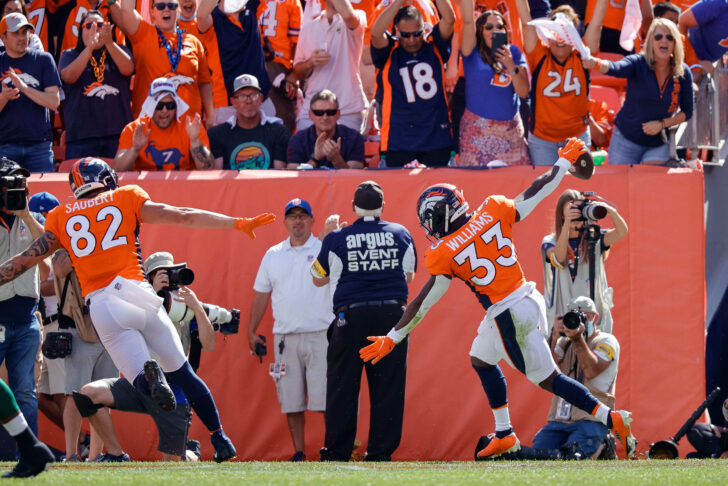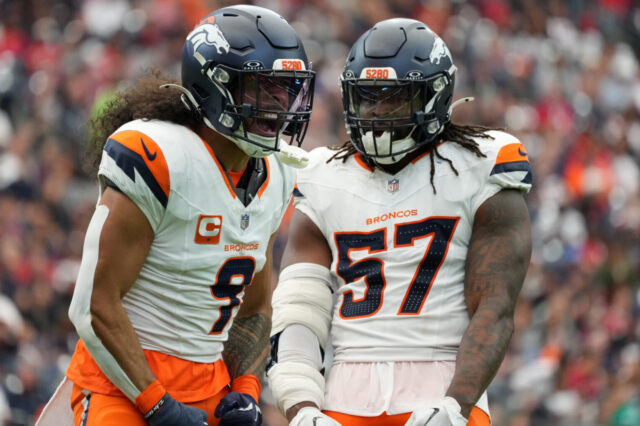The Denver Broncos are 3-0 for the first time since 2016. With a resounding win against the New York Jets, Vic Fangio and crew are sitting atop the AFC conference.
Sunday’s victory lacked some pizzaz for many as some fans claim the result was not emphatic enough to prove this team has clearly arrived.
What is clear is that the Broncos did not see the Jets as a true threat, and still won the game convincingly 26-0.
In the end, the running game and Von Miller provided a lift to their units and helped propel the Broncos to a 3-0 start ahead of their anticipated matchup against the 2-1 Baltimore Ravens.
Offensively, play-caller Pat Shurmur continued to ensure the team remained balanced, and both lead backs got touches. This commitment was indicative of a team knowing they are superior to their opponent and saving their game plan for their next opponent.
Reviewing the game, the commitment from Shurmur showed he was steadfast in running the ball and limiting the throws from Teddy Bridgewater. This essentially shortened the game and left little for the Ravens to gameplan for the next week.
The team was able to punch in two rushing touchdowns in goal-to-go scenarios before coughing up one in the final few minutes of the contest.
Defensively, Jets’ quarterback Zach Wilson appeared flustered throughout the game. He was under constant pressure as a result of their entire offensive game plan focusing on Von Miller.
Miller’s early pressure created issues for the offensive line of the Jets that began the demise of their offensive gameplan.
The Broncos turned over Wilson twice while sacking him five times. This resulted in keeping the Jets from ever reaching the red zone.
Here is how each critical play occurred and what lead up to these game-changing moments.
Running game powers Broncos to an early lead
The Broncos had a plan, and that was to pound the ball early and often against the Jets. While the game in the first half the team executed three scoring drives, two capped off by rushing touchdowns.
To reiterate, Shurmer’s game plan served two purposes. One, the team needed to be more effective running the ball even when the defense was prepared for it. Two, the team wants to save some of their more exotic looks for the Ravens next week.
The early success of the run mixed with pass had the team moving the ball well early. Simple runs like this short gain by Gordon went a long way to helping the team get a lead early.
The Broncos were able to use jet-motion by K.J. Hamler to pull the linebackers left, then run behind the guard/center combination inside. This play leads to a bigger gain later in the Broncos’ first scoring drive.
Here, the Broncos use motion to fake a quick screen. This action has a similar effect and softens up the middle of the Jets’ defense, pulling the linebackers out of position.
Gordon is patient and runs up the middle for a gain of ten and a 1st and goal situation for Denver.
After being stuffed inside on first-and-goal, the Broncos dialed up another running play. Intentionally using a tight formation with two running backs and three tight ends, the Broncos got the Jets to focus inside. The commitment to stopping the success of the inside run leaves Williams with a nice path to the pylon for six.
The running game was as balanced as it had been all season until the Broncos got out to a three-score lead. Shurmur essentially shut down their offense from there. With the game out of reach, the Broncos threw their offense into neutral and coasted to an easy victory.
To improve to 4-0 against Baltimore, the Broncos must continue to build on their early game success running the football as they did against the Jets.
Broncos’ pass rush and coverage are perfect complements vs Jets
Wilson was overmatched early and often against this Vic Fangio-coached defense. A large part of the Broncos’ defensive success was again Miller’s dominance.
Early in the game, Miller makes his presence felt. Coming off of the edge, the former Super Bowl MVP has to evade the extra blocker before engaging with the right tackle. Using his phenomenal speed, Miller ducks around the Jets’ Morgan Moses and gets the sack.
Miller and the rest of the Broncos’ pass rush was relentless and seemed to speed up Wilson’s clock.
Wilson’s deep drops will become a thing of the past. The Jets began to dial up the quick game to avoid the constant pressure applied by Miller and others.
Yet to make a critical error, Wilson had begun using more quick throws. Here the rookie quarterback tries to get the ball out quickly. However, Wilson is baited by Justin Simmons. Wilson throws an ill-advised pass towards Simmons and gets burned, resulting in an interception.
The pass rush influenced Wilson to read the defense quickly, something he is not equipped to do yet. Simmons capitalizes and intercepts the pass, essentially ending any threat of a Jets score in the game. The combination of the two will continue to create problems for opposing offenses throughout the season.
For the Broncos to slow down Lamar Jackson, they must get home on pressure looks. This helps creates some confusion in the backend similar to this past weekend against Wilson and the Jets.



